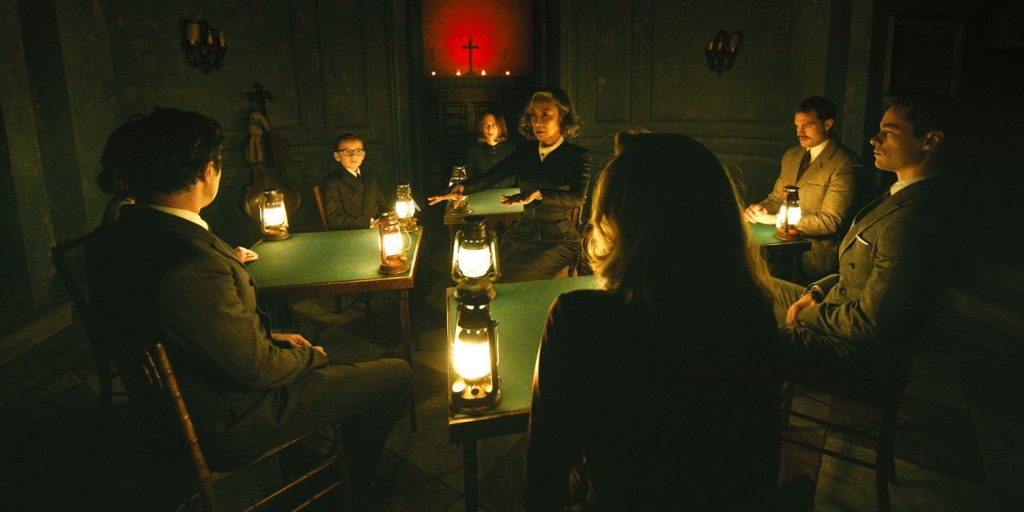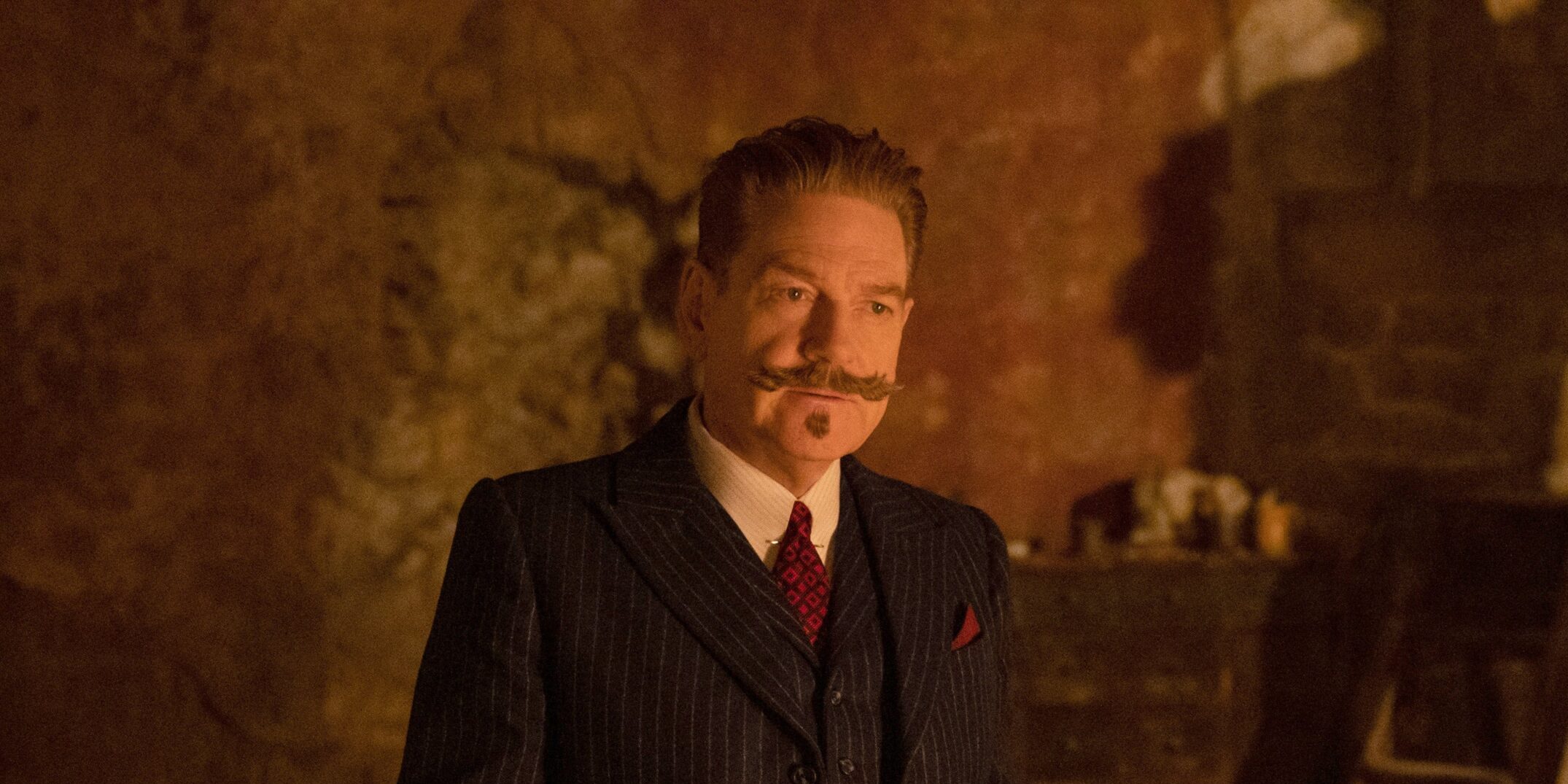In ‘A Haunting in Venice,‘ a disillusioned Hercule Poirot lives a quiet, uneventful life in his home in Venice, Italy. Determined never to take up investigative cases again, Poirot is challenged when he finds himself invited to a séance organized by a renowned opera singer, Rowena Drake, at her luxurious residence – the Palazzo Lacrime dei Giovani. From the moment Poirot sets foot in the foreboding halls of the palazzo, its darkness seeps into him as a horror legend resurfaces from the building’s storied past. The establishment cements itself as the heart of the narrative’s setting, hiding many secrets and sinister truths as mysterious figures lurk in its shadows!
Palazzo Lacrime Dei Giovani is a Fictional Venetian Palace
While ‘A Haunting in Venice’ is primarily set in the titular canal city of Italy, the Palazzo Lacrime dei Giovani, owned by opera singer Rowena Drake, is a fictional palace that cannot be found in reality. It was created by Michael Green, who adapted the screenplay from Agatha Christie’s 1969 novel, ‘Hallowe’en Party.’ The palace is not featured in the book, as the narrative is set in England, as opposed to post-World War II Italy, in the Kenneth Branagh directorial. Therefore, it becomes a pivotal backdrop for the whodunit mystery set exclusively within the confines of the palace purported to be haunted by the ghosts of orphan children.

One of the most intriguing aspects of Palazzo Lacrime is its unique spot on the banks of the Grand Canal. In reality, palaces on the iconic channel have a history of haunted pasts. For instance, the Palazzo Grassi on the Grand Canal is reportedly haunted by a young girl’s ghost after she was allegedly thrown from one of the palace’s balconies. This bears a striking resemblance to Alicia Drake’s death in ‘A Haunting in Venice.’ However, in the case of Palazzo Lacrime, the establishment also operated as an orphanage in the past when all the children perished away during the plague. Thus, it has a long history of unfortunate events occurring within its premise that has built up a powerful legend.
Crafting the Venetian Palazzo in the UK
To bring the Palazzo Lacrime dei Giovani to life, director Kenneth Branagh and production designer John Paul Kelly scouted locations against the waterways of Venice. They initially planned to authentically bring the place to life in one of the many establishments on the Grand Canal. Locals claimed that each of the houses was in some way cursed or haunted. Recalling the conversations, Branagh told Empire, “They would say, ‘Because it’s haunted. No, but really – it’s haunted, and the last 12 owners of this palazzo have died, all of suicide.’ That’s enough in that city to make you a little nervous when somebody then invites you to a seance.”
Ultimately, owing to the mobility and dynamism required for the scenes in the Drake residence, like the dropping of a chandelier, water seeping down walls, doors opening and closing shut, and other challenging setpieces, the central location was built on a soundstage in Pinewood Studios on Pinewood Road, Iver Heath in Buckinghamshire, UK. In an interview, Kelly said, “There’s a prominence to the palazzo on screen and its relevance to the story. It becomes a character and almost sits alongside the actors as a potential culprit. That was massively exciting and challenging as well.”
He also elaborated on how he visualized the overall plans for the interiors by adding, “There’s a consistent layout with the palazzos. There’s the boathouse, or cabana, where you bring in the gondola on the lower floor, and then upstairs is the piano nobile where all the impressive stuff happens, then a living floor above that. We added a few dimensions – secret passages and long corridors – and embellished it a bit, but we stayed true to the Venice architecture.”
Inspirations were taken from real private houses to fabricate a confluence of styles in the palazzo, which is supposed to exude a sense of lived-in history tracing back several hundred years. Kelly drew from several sources, ensuring there weren’t any particular references other than a general Venetian aesthetic. He explained, “It’s a mixture of places, most of them private houses. The Doge’s Palace, in Piazza San Marco, is a building that was influenced by 500 years of architecture, from Byzantine to Eastern European and Asian to Roman Classical, and those ideas are layered over a lot of periods of construction. A lot of palazzos, ours included, did the same thing. It’s a real mishmash of styles.”
Therefore, a massive effort was made to realize the gothic, dark visuals of Palazzo Lacrime dei Giovani, where a murder mystery takes place amidst mysterious occult visions of the inexplicable kind. Its shadowy hallways promote a sense of foreboding oppression that blurs the line between reality and nightmares. Though the palace cannot be found in real life, it carves a unique place in the whodunit genre while remaining confined to the realms of fiction.
Read More: Movies Like A Haunting in Venice


You must be logged in to post a comment.